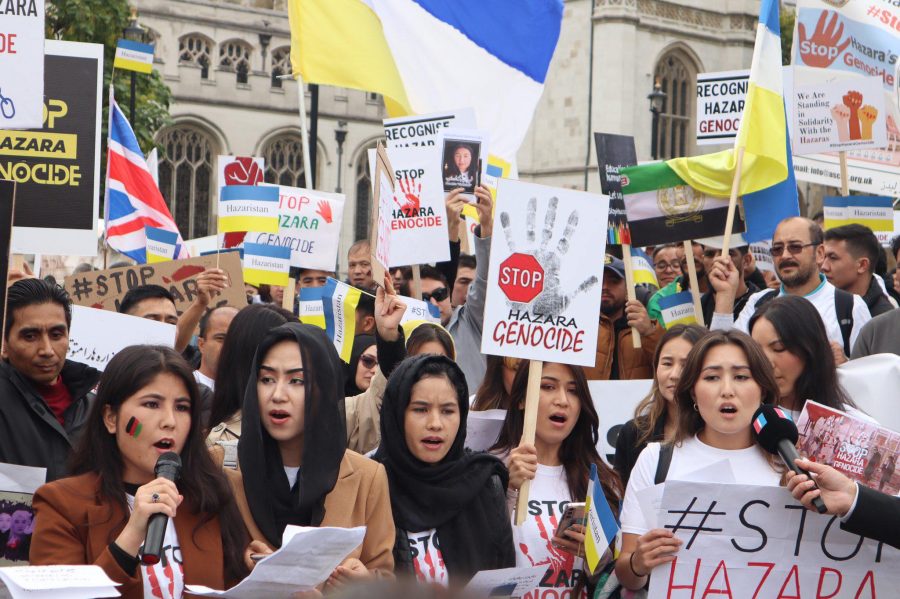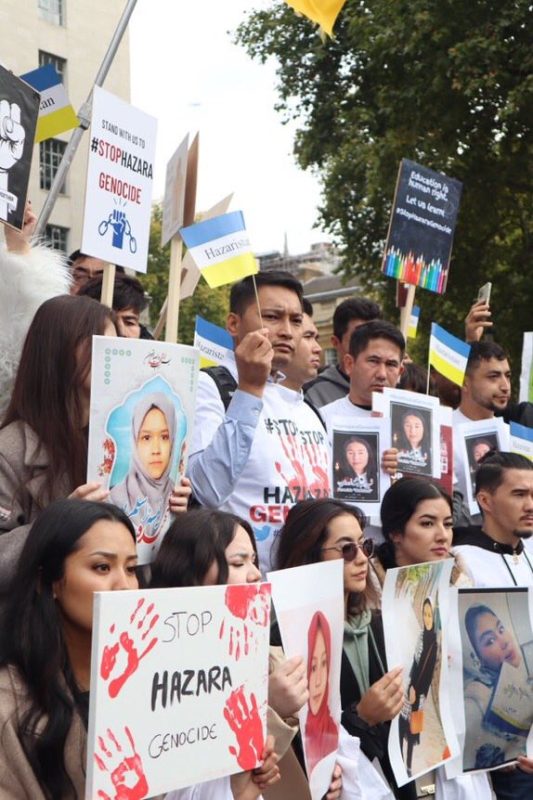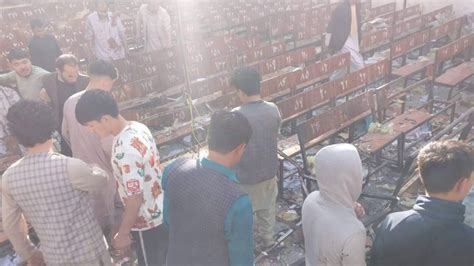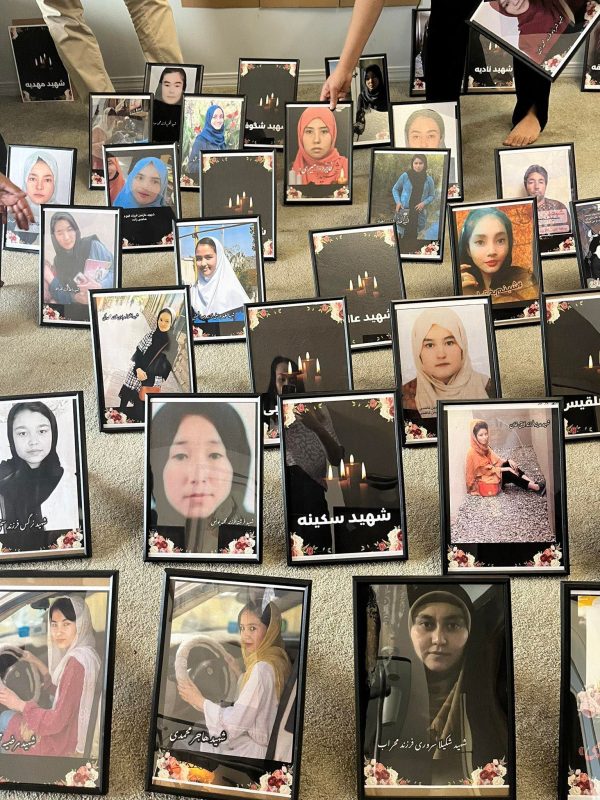Protests have taken off around the world following the latest Afghan bombing against the Hazaras. But who are the Hazaras, and what’s at stake in Afghanistan?
On September 30 2022, a suicide bomber blew himself up at the Kaaj Educational Centre in Dashte Barchi, a Hazara neighbourhood in Kabul, Afghanistan. Soon after Stop Hazara Genocide protests took off worldwide, condemning the heinous crimes against the Hazaras.
The risk of further violent bloodshed is on the rise as the Hazaras become increasingly marginalised. But, who are the Hazara people? And what’s exactly happening in Afghanistan?
Who are the Hazara people? Why are they targeted?
Afghanistan is a country of many ethnic groups. There is no dominant ethnic group which is a source of political turmoil. The Hazara people are one of the largest ethnic groups in Afghanistan, making up about 20-30% of the population. The group mostly follows Shia Islam, with some that are Sunni, Ismaili, and Syed.
The Hazaras themselves have a diverse ancestry, descending from Turkic, and Mongolian. As an ethnically mixed group, they stand out for their Asian features, similar to Uzbek and Turkic ethnic groups. As a result of the Hazaras’ racial diversity and religious beliefs, they are the most persecuted ethnic group in Afghanistan. However, discrimination stems beyond just race and religion.
Systemic Discrimination In Afghanistan
For the last 120 years, Afghanistan has been ruled by Pashtun leaders. The group came into power after the genocide of the Hazaras, led by Abdul Rahman Khan. The genocide itself attempted to “Pashtunize” the country by ethnically cleansing Hazaras from Afghanistan’s population. As part of the new regime, all Afghan ethnic groups, other than Pashtuns, became second-class citizens. Hazara citizens have borne the brunt of social exclusion for decades.
The Hazaras were once the largest Afghan ethnic group, constituting nearly two-thirds of the total population of the country before the 19th century. Some estimates suggest that more than half of the Hazaras were massacred, forced to flee or taken into slavery during the 1891-93 Hazara War when the Afghan King Amir Abdur Rahman Khan (1880-1901) led a genocidal campaign of violence against Hazaras.

Many of the Hazaras who fled the persecution by Amir Abdur Rahman Khan settled in the Indian subcontinent or Iran, laying the foundation of the Hazara communities that now live in the Pakistani city of Quetta and various districts in Iran’s eastern provinces. These communities have increased in size as more Hazaras who fled from Afghanistan over the past four decades have settled within them, especially in Quetta.
After the genocide of the Hazaras, the Afghan state systematically excluded them from the government, economic opportunities, and social dynamics. Afghanistan is a multi-ethnic and multi-lingual nation, but only the Pashtun ethnicity has ruled the country throughout kingdoms and presidencies.
Pashtun nationalism is against the very essence of democracy because it excludes other major ethnicities from high-ranking government positions and critical decision-making processes, especially the Hazara people. Even without Taliban rule, the Hazaras have never faced equal rights as other ethnic groups often being systematically discriminated against.
Sunni jihadis from all over Afghanistan, especially Afghan (Pashtun) Kochis, on the direction of Sunni mullahs, reached Hazarajat in September 1892 with the Amir of Kabul’s army to take part in a ‘holy war’ against Hazaras. According to sources, a total of 50,000 regular Afghan troops, along with 120,000 Sunni jihadists, had gathered against the ‘infidel’ Hazaras.
As far as land is concerned, the Amir of Kabul acquired the land of the Hazara, evicting 400,000 Hazara families.
Hazara Genocide: Destruction of the Bamyan Buddhas
The Buddhas of Bamyan were two sixth-century monumental statues carved into the side of a cliff in the Bamyan in the Hazarajat region. However, on orders from the Taliban, the Buddha statues were destroyed in March 2001, after the Taliban government declared them to be religious idols.
International and local opinion strongly condemned the destruction of the Buddhas. Like Ararat to the Armenians and the Western Wall to the Jews, the Buddhas of Bamyan became a symbol to exiled Hazaras of their lost homeland.
The destruction of the two giants Buddhas in Bamyan is, by far, the most devastating attack against the historical and cultural heritage of Afghanistan committed during the country’s recent period of turmoil. They represented the identity of the Hazara community, with their description symbolising the suppression of Hazara culture and history. Current issues: The Risks Facing Hazaras in Taliban-ruled Afghanistan:
The first Taliban rule in the 1990s was devastating for Hazaras— thousands were persecuted and massacred. Over the span of a few days in August 1998 alone, the Taliban killed over 2000 Hazaras in an event that journalist Ahmad Rashid described as “genocidal in its ferocity”. Furthermore, the UN discovered mass graves of Hazaras in Bamyan just a month before the fall of the Taliban regime in 2001. These experiences had a long-lasting, traumatising effect on the collective memory and consciousness of the community.
The last two decades of foreign intervention and experiments with a republican form of government were considered an era of opportunity for the Hazara community, one in which Hazaras were recognized, at least formally, as equal citizens under the 2004 constitution. The Hazara were given the opportunity to go to university and have their rights.
The Taliban takeover in 2021, was a moment of fear for the Hazara people in Afghanistan and the Hazara diaspora. We saw a Hazara massacre the last time they were in power.

Hazara’s Pursuit of Peace, Education & Success
September 30th, a suicide bomber entered Kaaj Education Centre in Darce barchi, Kabul and killed more than 58 girls and boys sitting a University entrance exam. This was a targeted attack on the Hazara community had led to worldwide protests against the genocide. This has gained more than ten million hashtags on Twitter and has led to the international government to recognize the genocide and call for help on the Hazaras situation such as MPs in the Houses of Parliament.

Rohullah Nikpa an ethnic Hazara, was Afghanistan’s first and only Olympic medalist. He became a national hero, returning to Afghanistan and getting off the plane to be met with a crowd of many thousands.
Additionally, according to the European Asylum Support Office (July 2020):
“They (Hazaras) have been described as ‘socially and culturally more progressive than other ethnic groups in Afghanistan, especially in relation to education and women’s rights.”
The Hazara ranked the highest in education in Afghanistan and more than 60% of Hazaras university admissions are Hazaras in Afghanistan. Many of the Hazara diasporas have been awarded places at Oxbridge, and scholarships at top institutions around the world.
Attacks on Hazara Schools, Hospitals, and Universities.
The Hazaras have faced the worst attacks yet, on schools, maternity wards, universities, targeted killing, land grabbing in Hazara lands. The amount of violence against the community has only increased.
One year ago, on May 12 2020, there was a horrific attack on the maternity ward of Kabul’s Dasht-e-Barchi hospital, a facility supported by Doctors Without Borders to official sources, 24 people were killed—including MSF midwife Maryam Noorzad, 16 mothers, and two children. All these women were of the Hazara ethnic group. This attack is one of a long series of attacks in recent years against this [ethnic] minority, particularly in the Dasht-e-Barchi neighbourhood of Kabul, a predominantly Hazara area.
On Sunday, May 9 2021, saw a deadly suicide bomb outside which killed at least 90 people dead and 240 injured. Most of the casualties were girls between 11 and 15 years old Hazara children.
The most horrific recent attack was on Kaaj Education Centre in Kabul UNICEF is appalled by the horrific attack, early this morning, inside the Kaaj Educational Center in the Dasht-e-Barchi district of West Kabul, Afghanistan. This heinous act reportedly claimed the lives of more than a hundred Hazara people and severely injured many more, including children. The victims were practising for the entrance exam to university.
Children and adolescents are not, and must never be, the target of violence. Once again, UNICEF reminds all parties in Afghanistan to adhere to and respect human rights and ensure the safety and protection of all children and young people especially the Hazaras who have faced hundred on targeted attacks and killing throughout the history of Afghanistan till this day,
Facing a Genocide

Attacks on Hazara and other religious minorities by the Taliban and the Islamic State of Khorasan violate international humanitarian law, which remains applicable in Afghanistan. Deliberate attacks on civilians are war crimes. Beyond the immediate loss of life, such attacks cause long-term economic hardship, incur lasting damage to physical and mental health, and result in new barriers to education and public life.
The dark history of Hazaras is reappearing again, with the Taliban and other terrorist organizations targeting the Hazara ethnic group that compromise more than 25% of the population. The attacks on the Hazaras are not only physical but psychological, ongoing trauma and grief the Hazaras are facing are unbearable for those living in Afghanistan under threat and for the Hazara diaspora who have to hear the constant horrific news from back home.
What can you do?
Let everyone know about what is happening to the Hazaras, and educate others about this ongoing genocide. As an international community, we have the responsibility to protect vulnerable groups. Without international help, the Hazaras are at risk of another genocide.
Write to local politicians, contact Uom Human Rights Society FemSoc, and use #StopHazaraGenocide on social media platforms.